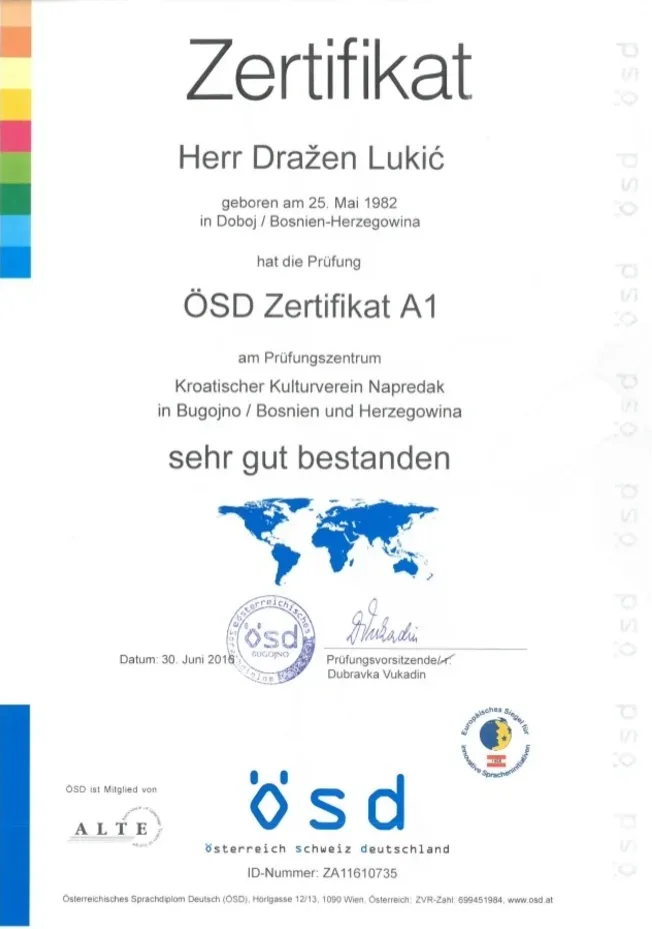Comprehending the ÖSD Certificate: Your Gateway to German Proficiency
In a significantly globalized world, efficiency in multiple languages is an important possession. For those interested in the German language, the ÖSD (Österreichisches Sprachdiplom) certificate stands out as a recognized credentials. This post explores what the ÖSD certificate is, its value, the structure of the exams, preparation tips, and answers to often asked questions.
What is the ÖSD Certificate?
The ÖSD certificate is a main language certificate provided by the Österreichisches Sprachdiplom Deutsch, or the Austrian Language Diploma in German. It assesses the language efficiency of non-native speakers and adheres to the Common European Framework of Reference for Languages (CEFR). The ÖSD licenses language skills ranging from A1 (beginner) to C2 (competent), covering 4 essential proficiencies: reading, writing, listening, and speaking.
Value of the ÖSD Certificate
Getting an ÖSD certificate holds significance for different reasons:
Educational Opportunities: Many universities and educational institutions in German-speaking countries need proof of German language efficiency for admission. The ÖSD certificate works as legitimate proof of a prospect's language abilities.
Employment Prospects: In a competitive job market, an acknowledged language certificate can enhance a prospect's employability, particularly in functions requiring German as a primary language.
Migration Requirements: Some immigration procedures in German-speaking nations necessitate language proficiency certificates. The ÖSD is commonly accepted by different authorities, making it an important property for those transferring to Austria or Germany.
Structured Learning: Preparing for the ÖSD certificate motivates students to develop a well-rounded understanding of the language, helping in both scholastic and everyday communication.
Structure of the ÖSD Exam
The ÖSD certificate encompasses different levels of evaluation, aligning with the CEFR. The examination structure consists of the following components:
Levels Offered:
A1: Beginner
A2: Elementary
B1: Intermediate
B2: Upper Intermediate
C1: Advanced
C2: Proficient
Parts of the Exam:
The ÖSD tests are developed to evaluate the following language abilities:
Listening Comprehension: Candidates listen to audio excerpts and respond to concerns to show understanding.
Reading sprachzertifikat a2 : This includes reading passages and responding to concerns to reveal interpretation and understanding.

Composing: Test-takers engage in written tasks, such as making up letters or essays, to show their capability to articulate thoughts on paper.
Speaking: In this section, candidates take part in discussions or monologues, showcasing their verbal interaction skills.
Exam Format:
Tests can take numerous formats, consisting of:
Paper-based: Traditional assessments undertaken personally at designated testing centers.
Computer-based: Digital evaluations offered in some areas, offering flexibility and convenience.
Getting ready for the ÖSD Exam
Preparation for the ÖSD certificate needs a structured approach. Here are some efficient methods:
Establishing a Study Plan:
Assess Your Level: Determine your existing efficiency level through practice tests.
Set Goals: Establish clear, attainable goals for each language skill (listening, reading, composing, speaking).
Daily Practice: Allocate time every day for language research study and practice different abilities to construct an extensive command of German.
Resources for Study:
Language Courses: Consider registering in language courses, either in-person or online, particularly designed for ÖSD preparation.
Books and Workbooks: Utilize materials that line up with the CEFR levels and cover all four competencies.
Online Platforms: Websites, apps, and online forums provide interactive exercises and community support.
Sample Exams: Familiarize yourself with the test format by practicing with sample questions and previous tests.
Engaging with German:
Immerse Yourself: Surround yourself with the language through music, movies, and podcasts.
Language Exchange: Partner with native speakers or classmates to practice conversational abilities.
Join Study Groups: Collaborating with peers can promote a supportive knowing environment and enhance inspiration.
Often Asked Questions (FAQs).
1. For how long does the ÖSD certificate stay valid?
The ÖSD certificate does not have an expiration date, but candidates are recommended to upgrade their skills occasionally, specifically for professional or scholastic functions.
2. Where can I take the ÖSD exam?
The ÖSD tests are administered at various certified evaluation centers worldwide. A list of places can normally be found on the main ÖSD website.
3. How much does the ÖSD exam expense?
Exam costs vary by location and level. It is suggested to consult local screening centers for precise rates.
4. Can I retake the ÖSD exam if I do not pass?
Yes, prospects can retake the exam as many times as necessary to accomplish their desired efficiency level.
5. Are there particular research study materials suggested for the ÖSD certificate?
While no official products are mandated, it is advantageous to utilize books customized to language proficiency exams and undertake practice tests.
Conclusion.
The ÖSD certificate functions as a trustworthy benchmark of German language proficiency, opening doors to instructional, professional, and immigration opportunities. With a well-structured preparation strategy, devoted practice, and the right resources, striving prospects can enhance their language skills and start a successful journey in mastering the German language. Whether for profession improvement or personal enrichment, the ÖSD certificate represents a substantial action towards ending up being proficient in German.
